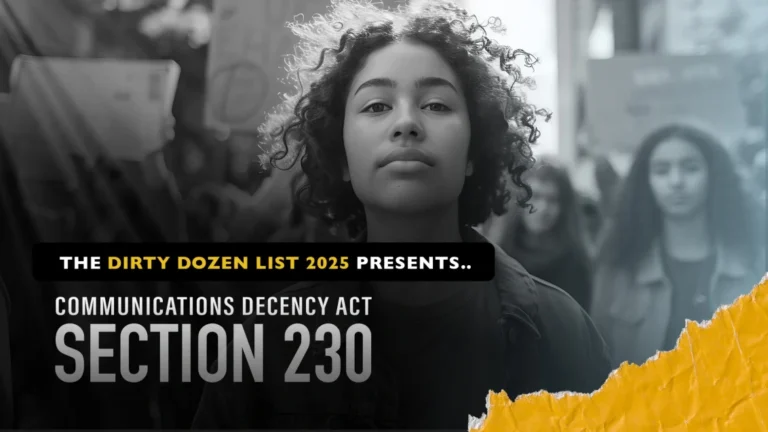The Legal Context
The American Library Association (ALA) has been on a campaign to prevent the use of Internet filtering systems on library computers since the 1990s.[1] This campaign is carried out in the name of the First Amendment but in analyzing the ALA’s statements on the matter I find myself questioning the validity of their claims.
The ALA vehemently opposes utilization of Internet filters in opposition to the Supreme Court decisions allowing for them, which is especially ironic as the Supreme Court is the arbiter of the parameters of the First Amendment freedom they claim is at stake. In 2003, the ALA was in fact, the challenger to the Children’s Internet Protection Act (CIPA), legislation passed by Congress which allows the federal government to require use of Internet filters on computers at libraries receiving federal funds.[2] The Supreme Court upheld this statute as constitutional. The ALA’s most recent statement on this issue, “Internet Filtering: An Interpretation of the Library Bill of Rights,”[3] is further wrought with inaccuracies and hysterical claims of censoring that completely disregard the health and safety of children.
First, the content restricted by Internet filters is either unprotected as to minors (“harmful to minors” material) or illegal content completely excluded from First Amendment protection (obscenity and child pornography). The Supreme Court made it clear in Ginsberg v. the State of New York,[4] that the State has such a “transcendent” interest in protecting children from harm that it may restrict materials that it reasonably believes are harmful to them. This case established the “harmful to minors” test which allows for the restriction of “any description or representation, in whatever form, of nudity, sexual conduct, sexual excitement, or sadomasochistic abuse, when it predominately appeals to the prurient, shameful or morbid interest of minors and is patently offensive to prevailing standards and is utterly without redeeming social importance for minors.”[5]
This test was later applied to allow for the restriction of indecent material in public broadcasting available to both children AND adults in FCC v. Pacifica Foundation.[6] The Court held that “[t]he ease with which children may obtain access to broadcast material, coupled with the concerns recognized in Ginsberg, amply justify special treatment of indecent broadcasting.” This means that even content that is protected for adults may be restricted on public broadcasting because the need to protect children from exposure is so great.
Obscenity on the other hand, is completely excluded from First Amendment protection and the standard for obscenity was established in Miller v. California.[7] Further, in New York v. Ferber,[8] the Supreme Court held that the interest in protecting children was so vital as to require the prohibition of all child pornography (i.e. child sexual abuse images), even that which is not obscene.
Considering this case law, and even setting aside U.S. v. ALA (which allows the Federal government to require Internet filters in libraries receiving funds) why would the ALA object so strongly to illegal and harmful content being filtered in libraries?
If the Supreme Court has categorically excluded 2 out of 3 of these materials (i.e. obscenity and child pornography) from any First Amendment protection, making them illegal to buy or sell, and in the case of child pornography to even possess, advertise or solicit,[9] and the protection of children so great as to require public broadcasting (a free and important mode of education and news for the public) to be free of material that is harmful to minors, why is the ALA so concerned about these restrictions in libraries offending the First Amendment?
Why is the ALA not concerned about libraries being misused for illegal activity and becoming unsafe environments for children to learn and research? Libraries pick and choose what books they will offer, yet when it comes to the Internet there can be no limitations? It is difficult to understand why the ALA is coming to this conclusion but one thing is clear: the ALA does not believe children are truly harmed by obscene, pornographic material (or they do not care if they are) and they do not respect laws restricting access to illegal content. If the ALA truly cared about the traumatization and the possible entry into abuse and addiction that can occur when a child is exposed to pornography, they would advocate for filters to be used in order to keep libraries safe for children and to maintain an environment of public pride and learning.
It would be understandable for the ALA to advocate for the best, most accurate filters to be used and for procedures to be in place that minimize over-blocking of information, but to completely refuse to support/recommend any filtering of any kind[10] is irresponsible and disregards federal law and the Supreme Court’s consistent rulings in regard to obscenity and the First Amendment.
[1] American Library Association, “Statement on Library Use of Filtering Software,” (July 1, 1997; Rev. November 17, 2000) http://www.ala.org/Template.cfm?Section=IF_Resolutions&Template=/ContentManagement/ContentDisplay.cfm&ContentID=13090 (accessed February 16, 2016).
[2] See U. S. v. A.L.A., 539 U.S. 194 (2003).
[3] American Library Association, “Internet Filtering: An Interpretation of the Library Bill of Rights,” (ALA Council, June 30, 2015) http://www.ala.org/advocacy/intfreedom/librarybill/interpretations/internet-filtering (accessed February 16, 2015).
[4] 390 U.S. 629 (1968).
[5] Id.
[6] 438 U.S. 726 (1978).
[7] This standard is a three part test: “(a) whether the average person, applying contemporary community standards’ would find that the work, taken as a whole, appeals to the prurient interest, (b) whether the work depicts or describes, in a patently offensive way, sexual conduct specifically defined by the applicable state law; and (c) whether the work, taken as a whole, lacks serious literary, artistic, political, or scientific value.” Miller v. California, 413 U.S. at 24 (1973).
[8] 458 U.S. 747 (1982).
[9] See U.S. v. Williams, 553 U.S. 285 (2008).
[10] http://www.ala.org/advocacy/intfreedom/librarybill/interpretations/internet-filtering (June 30, 2015).



